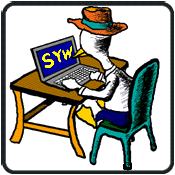Learn how to add various elements to your site, such as user input fields, conditions, date and time, and image rollovers. This course introduces you to the fundamentals of web programming using JavaScript to illustrate principles you can apply to all Web programming languages.
Prerequisites
- An understanding of HTML.
Lessons
Web Programming OverviewAdding basic Web programming to your Web skills enables you to create dynamic effects and add interactivity to HTML pages. Many scripting and programming languages can be used to add these features. This lesson reviews the key features of the major web scripting and programming languages, including the most popular choice -- JavaScript.
Add Scripts to HTML PagesIn this lesson, you learn basic Web programming terms and start adding script blocks to HTML pages. You also learn how to use scripts to do calculations or add strings of text together.
Get Input from Your VisitorsIf you want to interact with your Web visitors, you need a way to enable them to send information via scripts on your HTML pages. In this lesson, you learn how to create prompts and alerts to get information from users, and dynamically display a response on your HTML page.
Conditions and LoopsWhen you use conditions, you don't have to respond to your user in the same way every time. In this lesson, you also learn to automate activities such as counting.
Add Date and Time to Your Web PagesYou can add a date and time to your pages based on the visitor's time zone, or display the current time for any location in the world. You can also use JavaScript to create timers to activate scripts after a set amount of time.
Use Events to Create Dynamic PagesUsing basic page events (loading and unloading) or user events (click and mouseover), you can add scripts that execute when an event occurs. In this lesson you'll learn to create image rollovers and dynamic text changes.
SoYouWanna know more? Check out our full-length article SYW Beginning Programming Essentials Course

